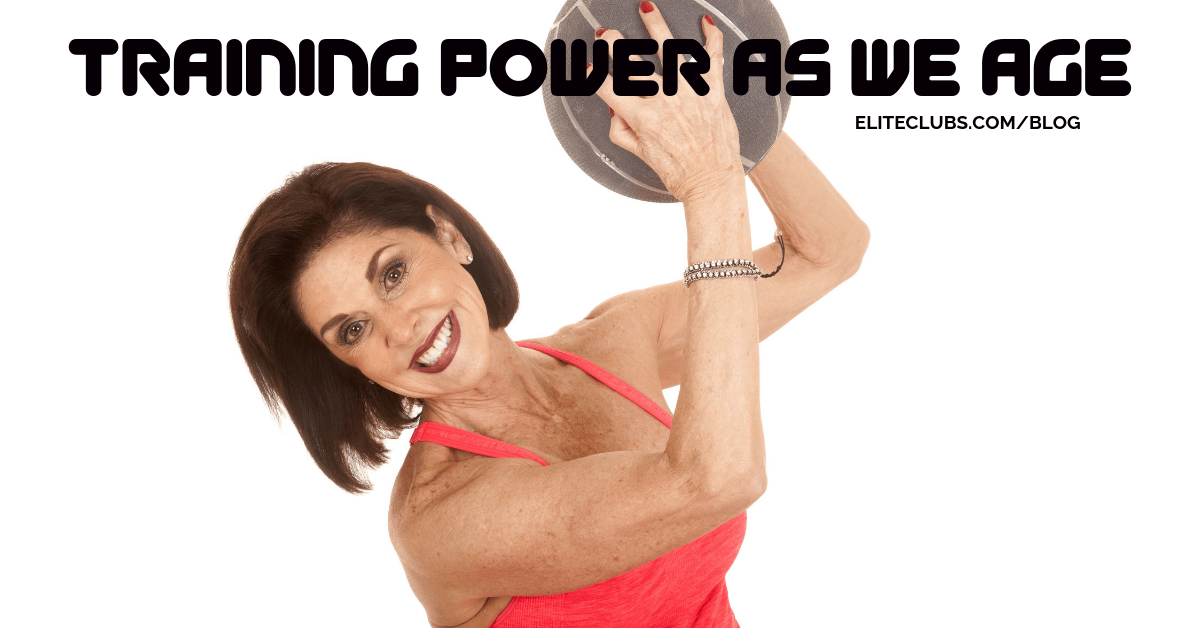
Training for power, as opposed to just training for strength, adds a time element. Think of power training as high-speed strength. Power training focuses on the speed of the weight lifted compared to strength training where you focus on the amount lifted. This is especially important for athletes, but it’s also important as we get older, too. Here’s why and how we should train for power as we age.
Why Train for Power?
As we age, our nervous system becomes progressively worse. It’s unfortunate, but it inevitably happens. This reduces abilities like power output, reaction time, balance, and injury prevention. We actually lose power output and reaction time twice as fast as strength.
Over a long period of time, we might still be very strong but very slow moving. This is especially significant because there will be times when we need to move and react quickly. If no one ever trained for power, then we would all be in a lot of trouble. Below are some common situations where reaction time is important as we age.
Quick Reaction Situations:
- Driving – avoiding an accident
- Falling – avoiding an injury
- Landing – after a jump, fall, change of direction
- Change of Direction – sports and performance (ex: tennis)
Benefits of Training Power
As you can see, there are many practical reasons why we should continue to power train. The benefits you’ll see from power training include:
- Reducing power losses over time
- Reducing injury
- Improving reaction time
- Better agility
- Better balance
- Improving coordination
- Increasing bone mass (especially important for women)
Great Alternative Power Exercises:
Try these power training exercises!
- Ball Slams
- Ball Throws
- Small Jumps
- Small Landing Exercise
- Ladder Drills
- Changing Direction drill (cone drills)
If you need help implementing some of these exercises into your workout routine, fill out the form below to contact an Elite personal trainer about options that will be right for you!
Set up a Free Fitness Consultation